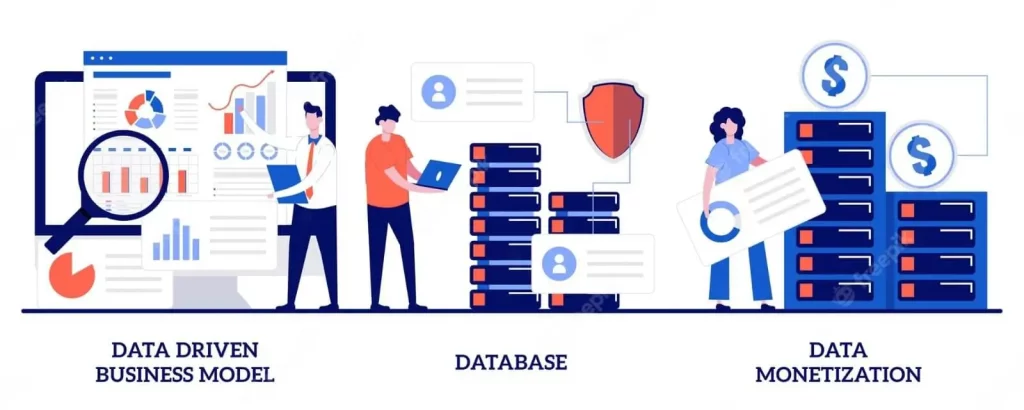
2. Social Media Marketing: Harness the Power of Social Platforms
In today’s digital world, businesses must rely on data-driven insights to make informed decisions.
A/B testing, also known as split testing, is a powerful tool that enables organizations to optimize their online presence by comparing different variations of their website or app.
This allows them to make data-informed decisions, ultimately improving their conversion rates and overall user experience. In this article, we will explore the various aspects of A/B testing and its crucial role in data-driven decision making.
Introduction to A/B Testing

A/B testing is a controlled experiment that compares two versions of a webpage or app (A and B) to determine which one performs better.
By showing these variations to users at random and analyzing their interactions, businesses can gather valuable insights into which changes lead to better results.
How A/B Testing Works
In an A/B test, a website or app is modified to create a second version (variation B) with a specific change, such as a different headline, button color, or overall layout.
Users are then randomly assigned to either the original version (control, or A) or the modified version (variation B).
Their engagement with each version is measured and analyzed using statistical analysis to determine which variation performs better for a specific conversion goal.
Benefits of A/B Testing
A/B testing offers several benefits for businesses, including:
- Making data-driven decisions
- Reducing guesswork in website optimization
- Enhancing user experience
- Improving conversion rates
- Increasing revenue and customer satisfaction
Developing a Data-Driven Mindset through Experimentation
A/B testing is an essential component of a data-driven mindset, as it promotes continuous experimentation and learning.
By consistently testing new ideas and changes, organizations can better understand the factors that drive user behavior and make informed decisions to improve their online presence.
Establishing a Testing Culture
To foster a culture of experimentation, businesses must:
- Encourage curiosity and open-mindedness
- Promote cross-functional collaboration
- Prioritize data literacy and skills development
- Recognize and reward experimentation efforts
- Focus on long-term, iterative improvement
Aligning A/B Testing with Business Goals
Successful A/B testing requires alignment with overall business goals. By setting clear objectives and key performance indicators (KPIs), organizations can ensure that their experiments contribute to their strategic vision.
Conversion Optimization with A/B Testing
A/B testing plays a vital role in conversion optimization, the process of improving a website or app’s performance to increase the likelihood of users completing desired actions (conversions).
By systematically testing different variations, businesses can identify the elements that have the most significant impact on user engagement and conversion rates.
Key Conversion Metrics
Common conversion metrics include:
- Click-through rate (CTR)
- Conversion rate (CR)
- Bounce rate
- Average order value (AOV)
- Customer lifetime value (CLV)
A/B Testing for Conversion Rate Optimization (CRO)
A/B testing allows businesses to optimize their website or app for specific conversion goals by testing different elements, such as:
- Headlines and copy
- Call-to-action (CTA) buttons
- Images and videos
- Forms and fields
- Navigation and layout
Statistical Analysis in A/B Testing
Statistical analysis is a vital aspect of A/B testing, as it helps organizations make sense of the data collected during experiments.
By applying statistical methods, businesses can determine whether the observed differences between variations are significant and make informed decisions about implementing changes.
Key Statistical Concepts
Important statistical concepts in A/B testing include:
- Sample size: The number of users exposed to each variation during an experiment
- Confidence level: The likelihood that the observed results are not due to chance
- Statistical significance: A measure of the confidence level, indicating whether the observed differences are meaningful
- Confidence interval: A range of values within which the true difference between variations is likely to lie
Interpreting A/B Test Results
When analyzing A/B test results, businesses should consider the following factors:
- Statistical significance: Ensure that the observed differences are statistically significant before making decisions based on the test results.
- Practical significance: Consider whether the observed improvements are meaningful in terms of business objectives and user experience.
- Trade-offs: Evaluate the potential trade-offs and downsides of implementing the winning variation, such as increased maintenance or reduced flexibility.
Website Optimization and A/B Testing
A/B testing is an integral part of website optimization, a process that involves making changes to a website to improve its performance and user experience.
By systematically testing different variations, businesses can identify the elements that have the most significant impact on user engagement, conversion rates, and other key metrics.
Elements to Test
Common elements to test in website optimization include:
- Headlines and copy
- Images and videos
- Call-to-action (CTA) buttons
- Forms and fields
- Navigation and layout
A/B Testing Tools
Several A/B testing tools are available to help businesses conduct experiments and analyze the results, including:
- Optimizely
- Google Optimize
- VWO (Visual Website Optimizer)
- Convert
- Adobe Target
User Experience and A/B Testing
A/B testing can also be used to enhance user experience (UX), the overall experience users have when interacting with a website or app.
By conducting experiments aimed at improving UX, businesses can increase user satisfaction, engagement, and loyalty.
Testing for UX Improvement
To optimize UX through A/B testing, businesses can test changes to elements such as:
- Navigation menus and elements
- Page layout and design
- Visual hierarchy and content arrangement
- Typography and color schemes
- Interactive elements and animations
Balancing Aesthetic and Functional Changes
When optimizing UX, it is essential to strike a balance between aesthetic and functional changes. While visual improvements can make a website or app more appealing, functional changes may have a more significant impact on user engagement and satisfaction.
Testing Variations and Metrics Analysis
When conducting A/B tests, businesses must carefully choose the variations to test and analyze the resulting data to gain meaningful insights.
Selecting Variations
To select the best variations for A/B testing, businesses should:
- Identify specific goals and objectives for the experiment
- Brainstorm potential changes that could help achieve these goals
- Prioritize ideas based on expected impact and ease of implementation
- Develop clear hypotheses for each variation
Analyzing Test Data
After running an A/B test, businesses should analyze the data to determine:
- Which variation performed better
- The difference in key metrics between the variations
- The statistical significance of the results
- The practical implications of implementing the winning variation
Split Testing and Its Role in A/B Testing
Split testing, also known as multivariate testing, is a more advanced form of A/B testing that allows businesses to test multiple variations of a website or app simultaneously.
This can help organizations gain deeper insights into user behavior and make more informed decisions about optimizing their online presence.
How Split Testing Works
In a split test, multiple variations of a website or app are created, each with a different combination of changes. Users are then randomly assigned to one of these variations, and their engagement is measured and analyzed to determine which combination of changes leads to the best results.
Benefits of Split Testing
Split testing offers several advantages over traditional A/B testing, such as:
- Greater insights into user behavior and preferences
- Faster results due to simultaneous testing
- More accurate data, as multiple factors are considered
- Reduced risk of false positives and negatives
A/B Testing and SEO
A/B testing can also be used to optimize a website or app for search engine optimization (SEO), the process of improving a site’s visibility on search engine results pages.
By testing changes that affect SEO factors, businesses can improve their search rankings, drive more organic traffic, and increase conversions.
SEO Factors to Test
Common SEO factors to test in A/B experiments include:
- Title tags and meta descriptions
- Heading tags and keyword usage
- URL structure and internal linking
- Image optimization and alt text
- Page load speed and mobile responsiveness
A/B Testing Best Practices for SEO
To ensure that A/B testing does not negatively impact SEO, businesses should follow these best practices:
- No cloaking: Do not show search engines different content than what users see.
- Use rel=”canonical”: Point variations back to the original page to prevent search engines from indexing multiple versions.
- Use 302 redirects instead of 301s: Use temporary redirects to indicate that the test URL is not the permanent version of the page.
By incorporating A/B testing into your digital strategy, businesses can unlock the power of data-driven decision making and optimize their website or app for maximum performance.
From conversion optimization to user experience enhancement, A/B testing is an invaluable tool for organizations looking to thrive in today’s competitive online landscape.
